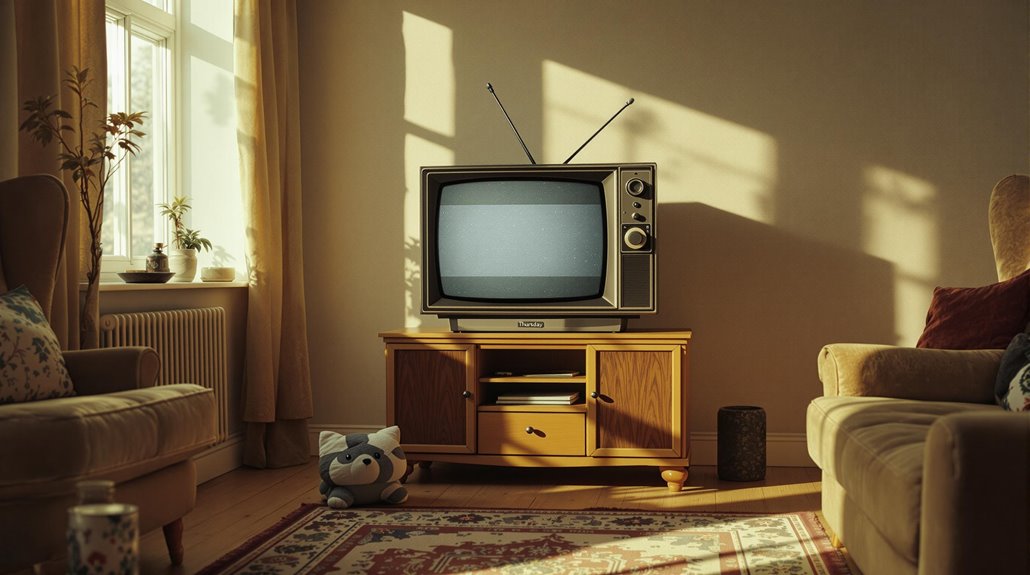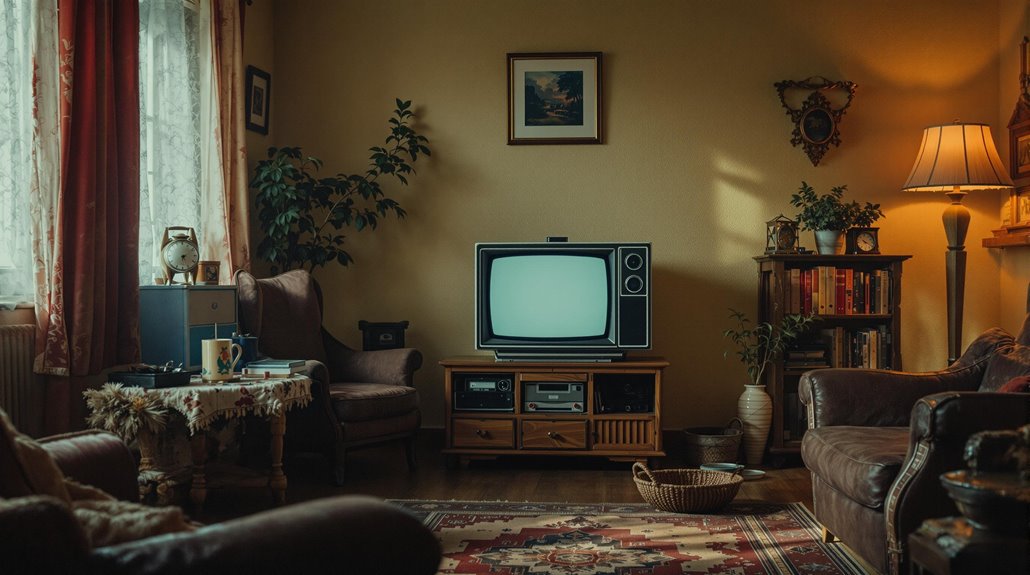Icelandic TV Didn’t Broadcast on Thursdays Until 1987
You might think it's strange that an entire country chose to turn off its TV broadcasts every Thursday, but that's exactly what Iceland did for decades. This wasn't due to technical limitations or budget constraints – it was a deliberate cultural choice. The practice shaped Iceland's social fabric in ways that still influence the nation today, from family traditions to entertainment habits. What drove this unique broadcasting decision, and why did it finally come to an end in 1987?
The Origins of RÚV's Broadcasting Schedule

When RÚV launched Iceland's first television service in 1966, it operated on a uniquely limited schedule that reflected the nation's cultural habits and resource constraints.
Early broadcasting was restricted to just Wednesdays and Fridays, with programming decisions based on the belief that viewers wouldn't watch during traditional dinner hours.
By September 1967, the schedule had expanded to include six broadcast days per week.
The service evolved significantly over the decades, eventually introducing color broadcasts in 1977 as part of its modernization efforts.
Why Thursdays Remained TV-Free
Throughout Iceland's early television era, the decision to keep Thursdays TV-free stemmed from a complex mix of cultural preservation efforts and practical constraints.
You'll find that this policy served multiple purposes. It helped assert Iceland's cultural independence from American influence while encouraging community bonding through local activities and gatherings. Starting with just twice weekly broadcasts, the network carefully balanced television programming with social priorities.
The TV-free day allowed RÚV to reduce operational costs and perform essential maintenance on broadcasting equipment. It's worth noting that the government strategically used this policy to promote traditional Icelandic values and language preservation.
The Thursday ban also addressed RÚV's practical limitations, including staffing constraints and a shortage of local content. By maintaining one TV-free day weekly, the broadcaster could better manage its resources while supporting local businesses that offered alternative entertainment options to Icelandic families. The longstanding Thursday tradition finally changed when RÚV covered the historic Reagan-Gorbachev summit in October 1986.
Life in Iceland Without Thursday Television
Despite the absence of television on Thursdays, Icelanders developed rich social routines that shaped their cultural landscape.
You'd find families gathering for board games, communities organizing outdoor activities, and local venues hosting live performances. This TV-free day fostered social bonding through traditional storytelling and shared hobbies.
While radio remained the primary source of news, you could observe increased community engagement at bookstores, sports clubs, and cultural events. Many families engaged in handball matches, reflecting the country's deep connection to its national sport.
Local businesses adapted by offering special Thursday programs, with restaurants and cafes experiencing higher patronage. The channel's early schedule of starting broadcasts at 8pm each evening left ample time for daytime community activities.
Though some residents found workarounds through VCRs or American TV signals from Keflavík base, most embraced the opportunity for face-to-face interactions.
Phone calls spiked as people maintained connections, and newspapers enjoyed higher circulation, reflecting Icelanders' commitment to staying informed and connected.
The Reagan-Gorbachev Summit That Changed Everything
As Reagan and Gorbachev met for their third summit in Washington, D.C. in December 1987, you'd witness a pivotal moment that transformed US-Soviet relations.
The summit's significance became clear when they signed the historic INF Treaty, eliminating an entire class of nuclear weapons – ground-launched missiles with ranges between 500-5,500 kilometers. A major breakthrough came when Gorbachev made unprecedented concessions by agreeing to eliminate the OKA/SS-23 missiles.
You'd see the first-ever agreement that actually reduced nuclear arms rather than just limiting them. The leaders spent their time in the Oval Office discussions addressing crucial topics like human rights, emigration, and arms control.
Beyond arms control, they established economic cooperation and tackled regional conflicts in Afghanistan, Central America, and Southern Africa.
The summit marked a dramatic shift in Cold War dynamics, as the Soviet Union embraced greater openness with the West.
This meeting laid the groundwork for future cooperation and demonstrated that these former adversaries could work together toward peace.
The Rise of Private Broadcasting Competition

When Iceland's Broadcasting Act of 1985 dismantled the state monopoly on television, you'd witness a rapid transformation of the country's media landscape.
Channel 2 emerged as the first private TV station in 1986, quickly attracting nearly 30,000 subscribers within its first year of operation. The new station required viewers to enter a code number to unscramble broadcasts.
This surge in private sector competition forced RÚV to adapt. You'd see the public broadcaster expand its programming schedule, finally adding Thursday broadcasts in late 1986 before evolving to daily operations in 1987.
The push for greater audience engagement led to a boom in broadcasting options, with Vision TV joining in 1995.
The Cultural Legacy of TV-Free Days
The historic practice of TV-free Thursdays has left an indelible mark on Iceland's cultural fabric that extends far beyond mere entertainment habits.
You'll find its influence in the nation's impressive literary achievements, with Iceland leading the world in books published per capita.
The initiative sparked unprecedented levels of community engagement, as you'd notice people gathering in pubs, cafes, and local events instead of staying home.
Initially operating with limited weekly broadcasts, the channel's transmission schedule helped foster these community traditions.
 1987, Thursday broadcasts marked the end of an era that had shaped Icelandic social life for decades.
1987, Thursday broadcasts marked the end of an era that had shaped Icelandic social life for decades.










